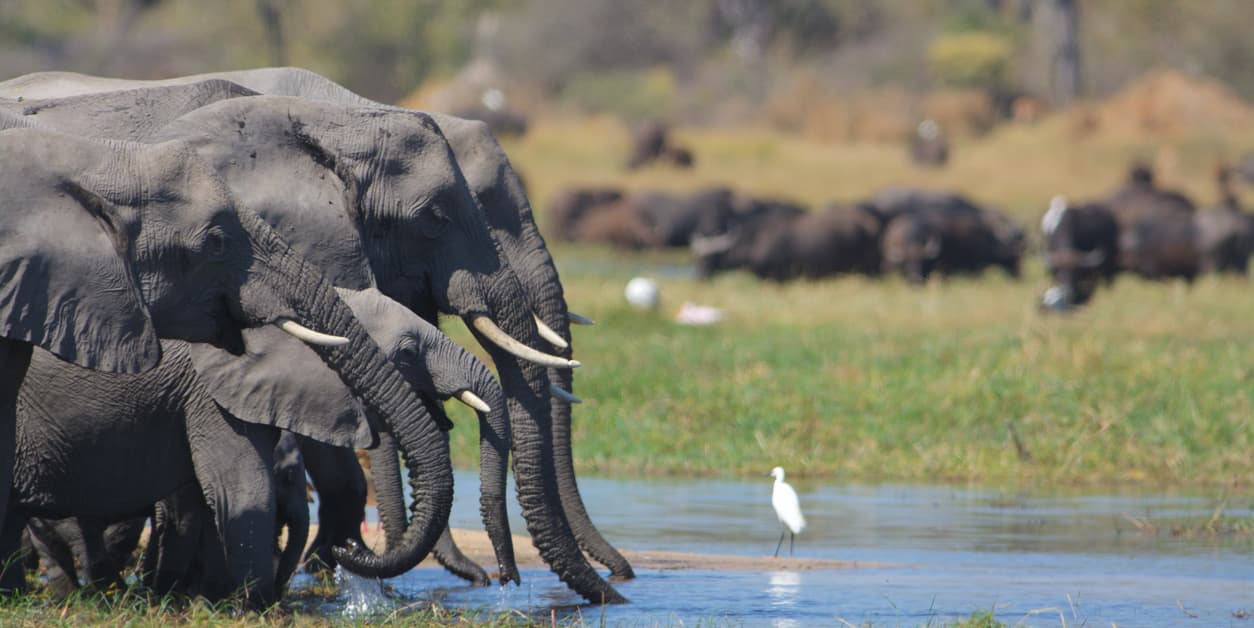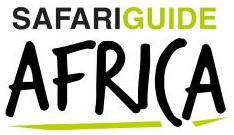Okavango Delta Safari
Botswana’s Okavango Delta, formed by the Okavango River merging with the Kalahari Desert, is one of the continent’s largest inland deltas and most unique ecosystems, and source of a diverse variety of wildlife. The Delta is one of the world’s great wildlife refuges, with unequaled intensities of mammal, reptile and bird life. Guided safaris during the day and night, as well as walking safaris, enable visitors to get the best from this great sanctuary.

The Okavango Delta is home to a handful of excellent safari camps and luxury lodges. However, most of them cannot be reached by road but via a chartered plane from Maun. Be forewarned, Okavango does not cater for the budget traveler. The Botswana government aims to keep the area as wild and unspoiled as possible, keeping it free from pollution and mass human intervention.
FEATURED OKAVANGO DELTA SAFARI LODGES
Air Botswana is the only carrier to fly to Maun, which in turn is the only gateway into the Delta, and the fares are extravagant. However, this is a policy that assists in conservation and protection, as the Delta remains an unspoiled area of unparalleled beauty.
WILDLIFE
Crocodiles hide on the riverbanks and shallow waters, waiting for their next meal. Early morning and late nights are the busiest time in the bush. Lions prefer to hunt before the worst heat of day sets in, followed closely by scavenging hyena, while reclusive leopard wait for nightfall. Enormous herds of zebra, wildebeest, and buffalo roam the plains freely and over 400 species of birds can be seen in the Delta, including the iconic fish eagle.
Game viewing can also be done via light aircraft, but the most unique way to explore the area is on the back of an elephant at the Abu Camp. Mokoro (wood canoe) trips also provide for a truly authentic experience. The canoe is then “poled” through the water by guides, bringing visitors exhilaratingly close to hippo and crocodile. Fishing is not the major attraction of Okavango, but there is a fair amount of fish to be caught, including the stubborn tiger fish. Fishing can be done anywhere, but if you are after the big boys, it is best to hire a boat and head towards the deeper waters in the north, known as the Panhandle.
LANDSCAPE
The Delta is formed by the Okavango River empties into the great Kalahari Desert where an ancient lake once sat, forming a wild oasis in an otherwise harsh landscape. Botswana itself is lush and green, but needless to say, the surrounding deserts are not. The heart of the river begins in Angola, where it flows through Namibia, a dry semi-desert country, and finally enters Botswana to become the Okavango.
The Delta is a maze of hidden lagoons, lakes and islands, most of which disappear or transform every year with the annual floods. The water of the Delta is surprisingly clean, even crystal in certain places where the animals do not graze. Covering an area of 17 000 square kilometers, the floodwaters are of great benefit to the inhabiting wildlife as well as human visitors – allowing canoe trips to view the game from the waters. Expect to see large herds of elephants playing in the water to escape the heat of the sun, and hippos lazing on the network of green islands.
WHEN TO VISIT
The best time to view wildlife is between May and October when the animals will become more concentrated along the flooded areas since the vegetation starts to dry out in winter. Birding enthusiasts, however, should visit between the rainy season from November till April, when the migrant birds are returning home.
